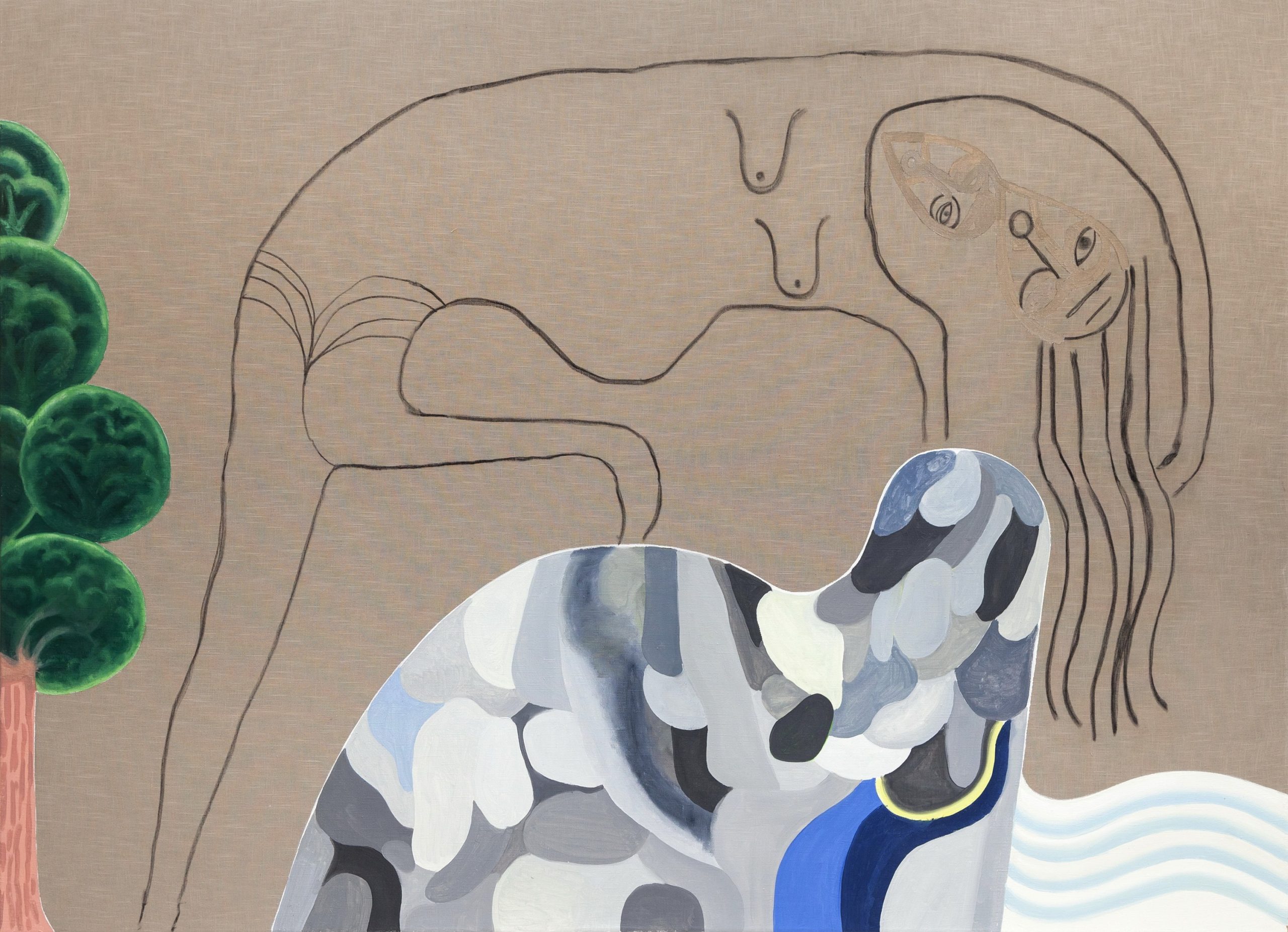Lima, 1972. Juan Tessi’s work is an ongoing exploration of the language of painting as it moves from one pictorial support, format and approach to another. The body is ever present, intersecting
reflections on queer desire and subjectivity, and the relation between painting and biological processes. Tessi has also explored the tension between craft and technology, approaching painting both as surface and as object, the results being the creation of very personal poetics
always grounded in pictorial processes.
In the early 2010’s Tessi created a series of enigmatic abstract paintings by listening to an 80’s diva make-up tutorial and following its instructions. In a later series he peeled off the “skins” of
paintings, then attached them to stretched raw linens, holding these “skins” against the fabric through the static electricity generated by plexiglass shapes resting on its surface.
A series developed between 2016 and 2019 treated the canvases as bodies for ceramic heads, which concentrated all of the painterly gestures outside the canvas itself, which only held schematic charcoal drawings of heads ́ bodies For his 2016 solo exhibition at MALBA, Tessi presented a two-stage exhibition. During its first
weeks the paintings were placed in unexpected spots within the building: those where surveillance cameras were pointed to, such as the parking lot, the ticket counter, even an outdoor terrace where the works were exposed to rain, sun and wind. The proper exhibition
room held a series of monitors showing what the surveillance cameras were recording. The paintings moved into the exhibition hall only during the last weeks of the show. In recent years
Tessi deliberately looked at paintings of early modernists Mardsen Hartley and Arthur Dove, allowing himself to soak up those influences.
In a an essay about Juan Tessi’s work, Javier Villa, senior curator at the Museum of Modern Art of Buenos Aires, places his work in a lineage that belongs neither to the linear, “monotheistic” tradition
of European Modernism, nor to the impulse towards “anthropophagy” (as influential Brazilian modernist poet Oswald de Andrade employed the term) of other Latin American avant-garde
movements —meaning art that devoured inheritances and influences from colonizers—. Rather than banning the past or engulfing its perceived enemies, Villa sees in Tessi’s pictorial strategies a similar
approach to that of ancient Meso-American cultures: to incorporate others’ deities into one’s own pantheon in order to become stronger. “His is a political manner of creating”, Villa argues, “one which
aims at generating a new species. Tessi’s painting takes temporal and stylistic jumps, from one work to the next or even within each painting, with the self-assurance provided by the ethics of his inclusive pantheon”.
“Tessi is a sort of prophet of pictorial interspecies…It is not important which of the deities is being incarnated, what matters is to challenge the limits of painting and the closure of language…” Villa
goes on to describe Tessi’s 2018 exhibition Manglar, as an amphibious habitat where diverse crosscurrents intersect: pre-Columbian imagery, Orientalist exoticism, the lyricism of early XX century North American painting, conceptual thought processes influenced by local informalism. An ecosystem capable of hosting a multitude of species which, in turn, will give rise to new ones. A “trans” habitat, where everything can relate to everything else. In this regard, Tessi is a profoundly Latin American artist. “His is a painting which is not concerned with accumulating moral gestures…A painter who is not engaged in a historical battle, but works with the impunity and the certainty of knowing that the deities are on his side. A self-confidence that only an artist from a colonized region can afford.” Villa concludes.


 Tessi Juan
Tessi Juan